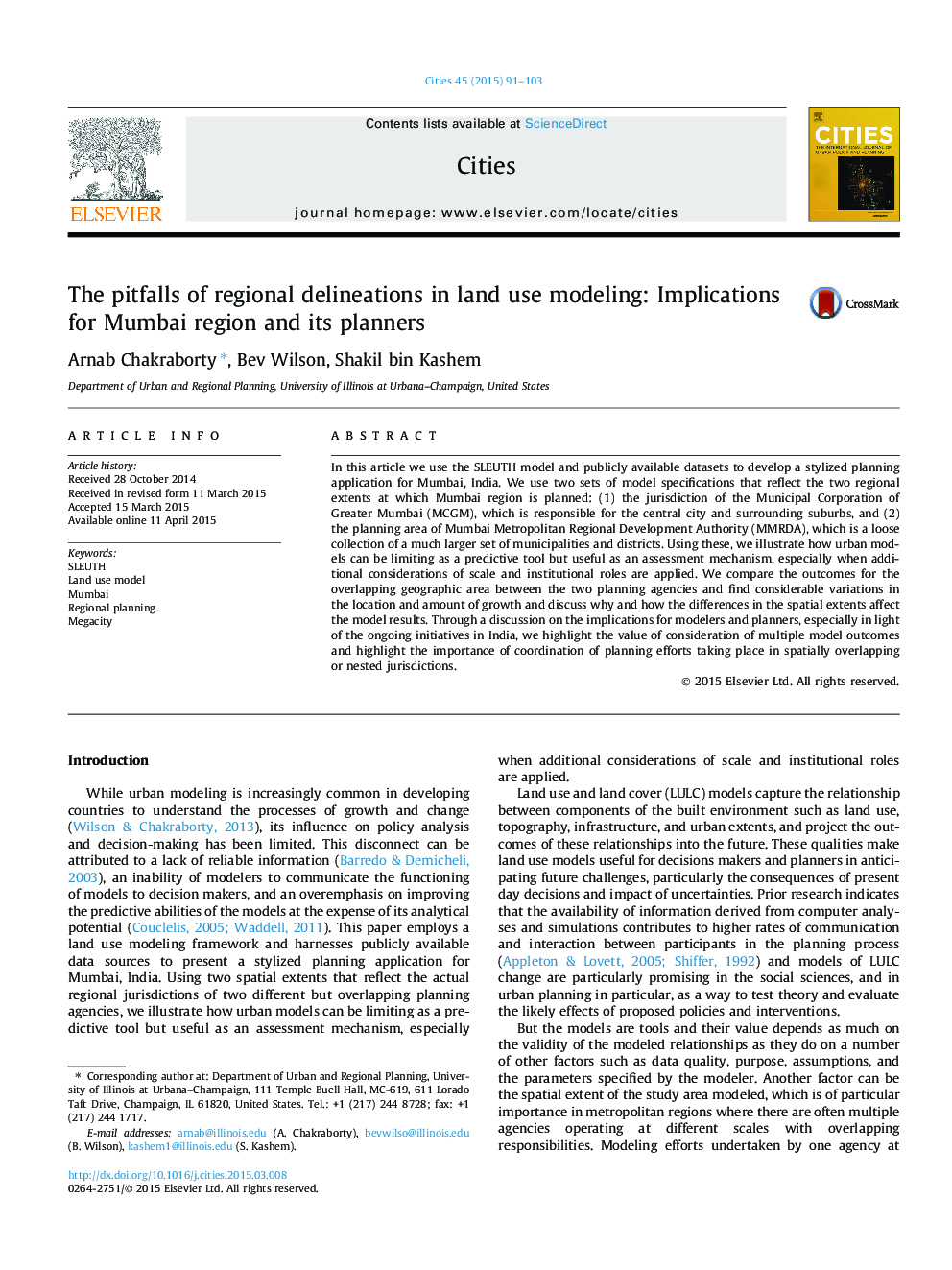| Article ID | Journal | Published Year | Pages | File Type |
|---|---|---|---|---|
| 7418533 | Cities | 2015 | 13 Pages |
Abstract
In this article we use the SLEUTH model and publicly available datasets to develop a stylized planning application for Mumbai, India. We use two sets of model specifications that reflect the two regional extents at which Mumbai region is planned: (1) the jurisdiction of the Municipal Corporation of Greater Mumbai (MCGM), which is responsible for the central city and surrounding suburbs, and (2) the planning area of Mumbai Metropolitan Regional Development Authority (MMRDA), which is a loose collection of a much larger set of municipalities and districts. Using these, we illustrate how urban models can be limiting as a predictive tool but useful as an assessment mechanism, especially when additional considerations of scale and institutional roles are applied. We compare the outcomes for the overlapping geographic area between the two planning agencies and find considerable variations in the location and amount of growth and discuss why and how the differences in the spatial extents affect the model results. Through a discussion on the implications for modelers and planners, especially in light of the ongoing initiatives in India, we highlight the value of consideration of multiple model outcomes and highlight the importance of coordination of planning efforts taking place in spatially overlapping or nested jurisdictions.
Related Topics
Social Sciences and Humanities
Business, Management and Accounting
Tourism, Leisure and Hospitality Management
Authors
Arnab Chakraborty, Bev Wilson, Shakil bin Kashem,
